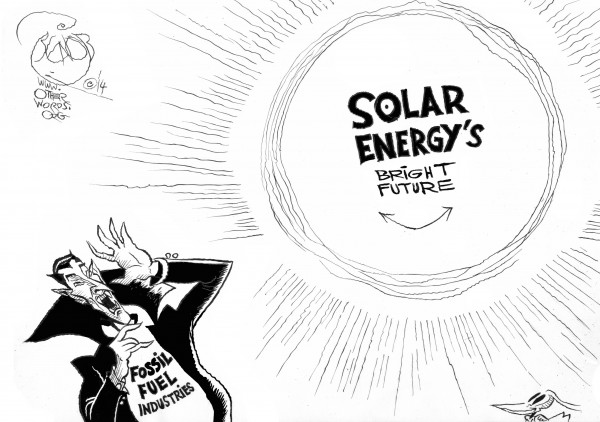
A collection of hints to help nurture a more ecological and economical household with very simple choices
Thursday, August 28, 2014
Going beyond going paperless to save energy
 |
| image courtesy of : wikimedia commons |
Even less paperless communication. Yes, you read that right. Email has become a "paperless tiger", loading up our inboxes with an unending stream of communication. Ask any business person what wastes more time in the day than anything? Going through email. According to an independent study by Atos Origin:
...the average employee spends 40% of their working week dealing with internal emails which add no value to the business. In short, your colleagues only start working on anything of value from Wednesday each week. Our own analysis found worrying levels of email traffic: of 95,000 emails sent, 75,000 were internal, while 68% of the 127,000 received also came from internal sources.It's not just the issue of time, there is actually a carbon footprint to all that sending, opening, reading, or deleting email followed by a repeat every single day. Projections from The Radicati Group estimate that in 2015, the average business person will handle 125 emails/daily, up from 105 in 2011. Each email sent uses about 4 grams of carbon, which doesn't sound like much, until you extrapolate those numbers per person, per email, per year and suddenly, the average person emails the amount of carbon equal to a 200 mile car trip. We're not advocating to stop emailing, but rather email intelligently.
Considering the amount of useless emails we send and receive, it shouldn't be difficult to cut that number in half. Here are some tips from SingleHop cloud computing:
Taking these steps to reduce our paperless output could make the words "You've Got Mail!" a welcome thought, in addition to saving the planet.
- Stop hitting reply all. Often, a conversation between two people need not involve an entire email list.
- When you email, you do not need to contact everyone in your address book. Instead, judiciously send to those who need to know.
- Search your email by keywords instead of asking someone to resend a document that was buried in those 100+ emails from the day before.
- Unsubscribe. Often, whenever we shop for something online or research a topic, our email gets entered in a database and we receive daily notifications. It's just as easy to go to the website instead of have the website come to you in an email.
- Get up and walk over to someone's desk instead of sending an email. Talk to your co-workers face to face. Think of the number of emails that are generated that may have simply needed a 2 minute conversation.
Monday, August 25, 2014
What does organic mean and why should it matter?
 |
| photo credit: marfis75 via photopin cc |
What Does Organic Really Mean and Why Does It Matter?
If you're concerned about health and wellness, you’ve probably heard about organic foods and their advantages. The organic movement has become popular in recent years. By learning more about these earth-friendly practices and how they work, you can discover the benefits of using organic products.
Understanding Organic Certification
Manufacturers can’t simply declare an item to be organic. Their products must fit a very specific set of requirements. All organic crops must be grown in unmodified soil and kept separate from conventional crops. They must be free of chemical pesticides, genetically modified seeds, artificial fertilizers, and sewage-based fertilizers. Organic livestock must be allowed to graze freely outside. They can’t be fed antibiotics, hormones, or animal by-products of any sort.
Origins of Organic Agriculture
Organic agriculture isn’t a recent invention—in fact it’s as old as human civilization. Before scientists developed artificial herbicides and fertilizers, farmers used natural techniques such as herbal pest control, manure, and crop rotation to grow their plants. By the year 2011, the organic industry in America was flourishing, with more than 30 billion dollars in annual sales. It is one of the most robust and quickly growing industries in America. As more and more farmers choose to go organic, people have become better educated about the differences between organic and conventional products. These changes have led to increased job opportunities in many parts of the country.
How Can You Benefit From Organic Products?
A major benefit of organic cotton and other crops is the absence of harmful pesticides which can cause serious harm to the human body. Kids under 18 are especially vulnerable because they have less developed immune systems. Organic crops aren't just better for you—they also taste and feel better. Organic vegetables and fruits are known for their fresh, delicious taste. Careful regulations bring the food to your table in top condition. When you choose organic towels or sheets, you can feel the difference against your skin. These products also help the environment by cutting down on water use, energy use, pollution, and soil erosion.
Making a Smart Choice
Foods and fibers grown without chemicals can be more expensive than their conventional cousins. Natural pest management, weeding by hand, and other labor-intensive activities mean that organic products often come at a higher price. When household budgets are tight, it can be difficult to pay a bit more for organic products. As these farming and production practices become more popular, the cost of going organic is beginning to drop. Supporting organic foods and products is a great way to influence market prices and guarantee healthy generations in the future. Always check labels to make sure the organic certification is genuine.
Solar Power Gets Hot, Hot, Hot (reprinted from Otherwords)
It's hard to rig the rules against increasingly competitive green energy options
By Emily Schwartz Greco and William A. Collins


With so many homeowners and businesses making greener energy choices, private utilities — along with big oil, gas, coal, and nuclear companies — see the writing on the wall.
Unlike some other denizens of the fossil-fueled set, this gang isn't beating oil wells into solar panels, retiring nuclear reactors, or embracing wind and geothermal power. Instead, these guys are trying to coax lawmakers into rigging the rules against increasingly competitive new energy alternatives.
You see, the bulwarks of conventional energy are good at math. And the math is increasingly not in their favor.
Solar panels are growing so affordable, accessible, and popular that sun-powered energy accounted for 74 percent of the nation’s new electric generation capacity in the first three months of this year. Wind power comprised another 20 percent, geothermal 1 percent, and natural gas plus other sources accounted for the final 5 percent.
Coal didn't even register.
OK, so that first-quarter surge was kind of an anomaly because it included the inauguration of the Ivanpah Solar Electric Generating System, the world’s largest solar-concentrating power plant. Through a vast array of seven-by-ten-foot mirrors located on federal land along the California-Nevada border, this remarkable site produces enough energy to power 140,000 homes. Another vast utility-scale project aptly called “Genesis Solar” ramped up too.
But the U.S. solar industry did install a record amount of new capacity in 2013. And once enough folks produce their own power on their rooftops and utility-scale clean energy becomes commonplace, demand for the juice generated by the dangerous and dirty oil, coal, gas, and nuclear industries will fizzle.
Can you imagine the economy weaning itself off of fossil fuels by the middle of this century? That’s what Denmark has officially pledged to do.
Besides, we all need to visualize this possibility. Unless most of humanity transitions to a new way of life powered by climate solutions, global warming could ultimately render the Earth uninhabitable.
Can you guess who is trying to manipulate legislation to squeeze a few more years out of the dirty-energy status quo instead of helping make a requisite green transition happen?
The American Legislative Exchange Council — a secretive national network known as ALEC — is stalking state capitols for just this purpose. ALEC’s lobbyists push a broad conservative agenda in statehouses through templated bills they tweak for state lawmakers.
What are these bills calling for? In states like Arizona, Utah, and Oklahoma, there are efforts to essentially tax homeowners who lease solar panels. But mostly ALEC is aiming for something bigger: gutting individual state “renewable portfolio standards.”
Those wonky-sounding regulations require utilities to provide a certain percentage of power from renewable sources at some set point in the future.
Alternative-energy leader California, for example, has committed to drawing a third of its juice from climate-friendly sources by 2020.
And who’s paying for this dirty work?
Edison Electric Institute (EEI), the trade association for the 70 percent of the U.S. utility industry controlled by private companies, is behind it — according to the Center for Media and Democracy. It’s joined in this legislative attack by coal giant Peabody Energy, ExxonMobil, Shell, BP, Koch Industries and other big fossil-fueled interests.
It may be hard to believe, but so far, foes of systematically encouraging renewable energy growth are losing. Badly. Even in Kansas. That state’s GOP-controlled legislature refused to repeal its renewable energy standard a few months ago in a 63-60 vote.
All 13 state-targeted efforts to chip away at or kill renewable energy standards have failed so far this year. Not one state rolled back its standards in 2013 either.
Who could have guessed that renewable energy would be so hard to foil? Well, anyone who pays attention to all the jobs it generates.
The solar industry now employs at least 142,000 people in the United States. Solar workers outnumber coal miners in this country. In Texas, solar supports more jobs than ranching and California has more solar workers than actors. Wind jobs are growing fast too. They hit a total of 80,000 last year.
Sorry, ALEC. Even the reddest states can’t ignore this rising tide of green jobs.
Emily Schwartz Greco is the managing editor of OtherWords, a non-profit national editorial service run by the Institute for Policy Studies. OtherWords columnist William A. Collins is a former state representative and a former mayor of Norwalk, Connecticut. OtherWords.org
Subscribe to:
Posts
(
Atom
)
